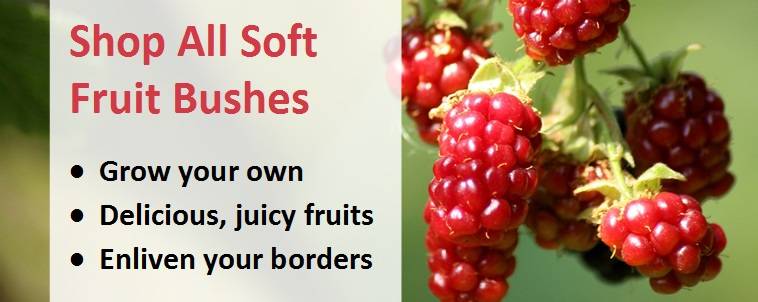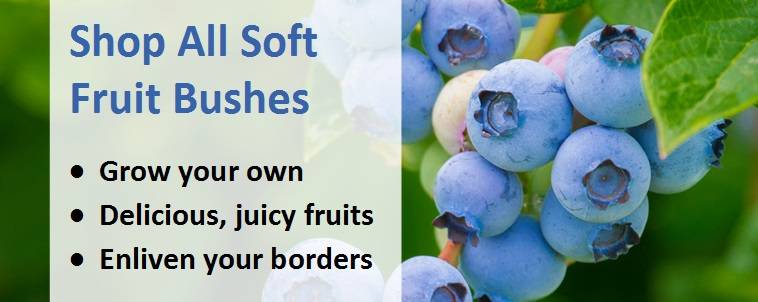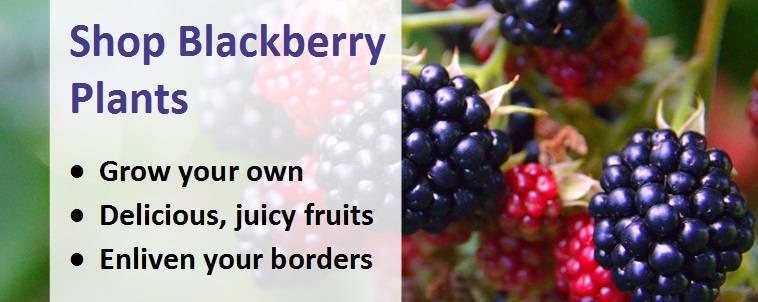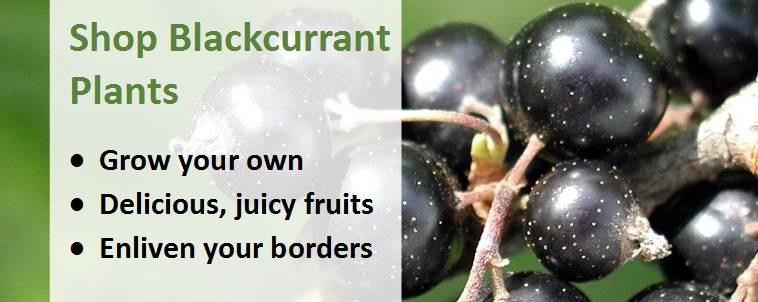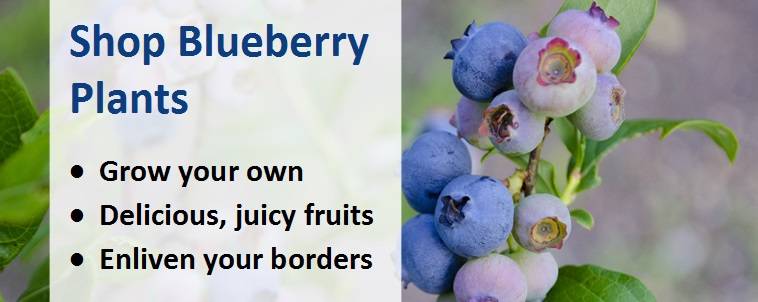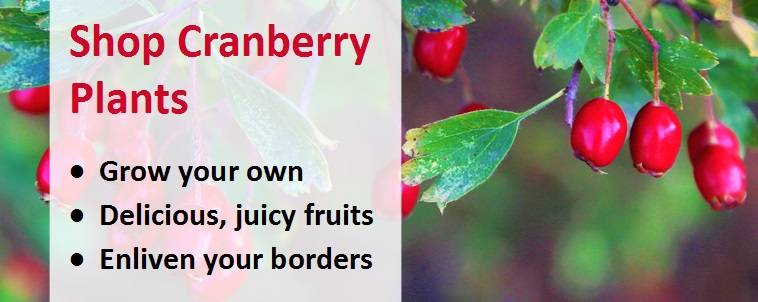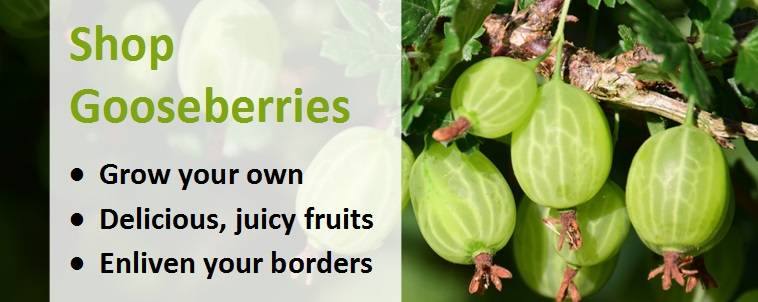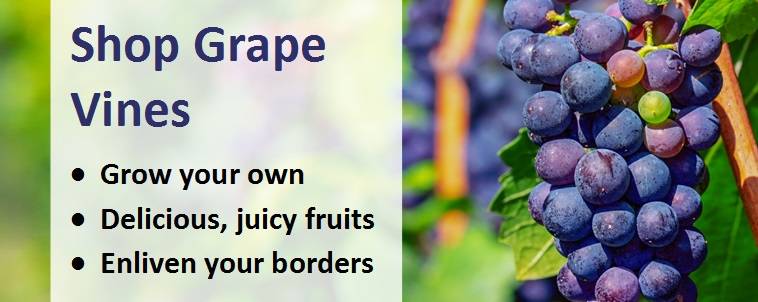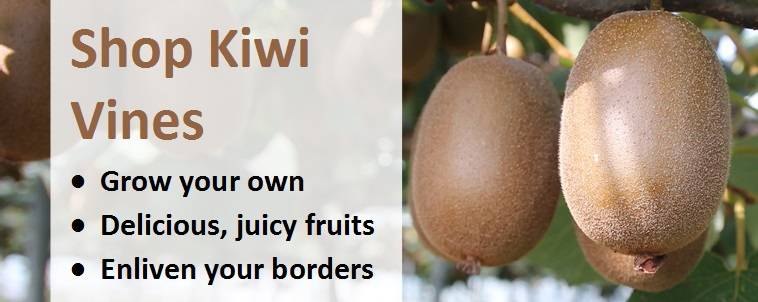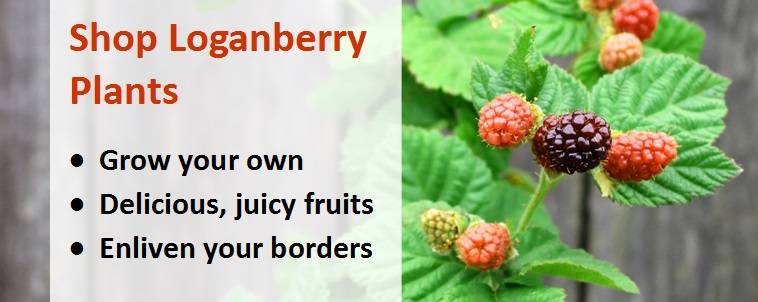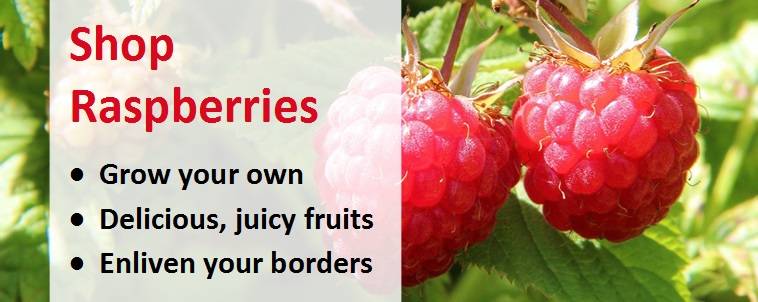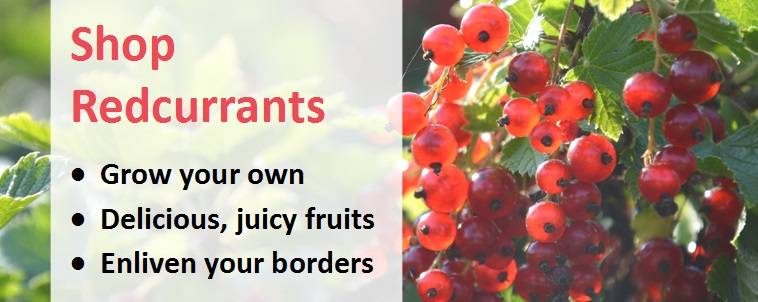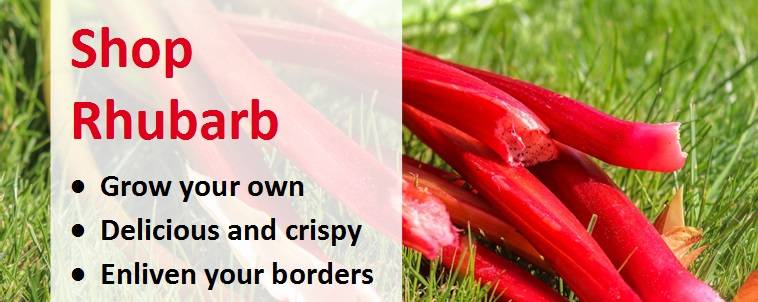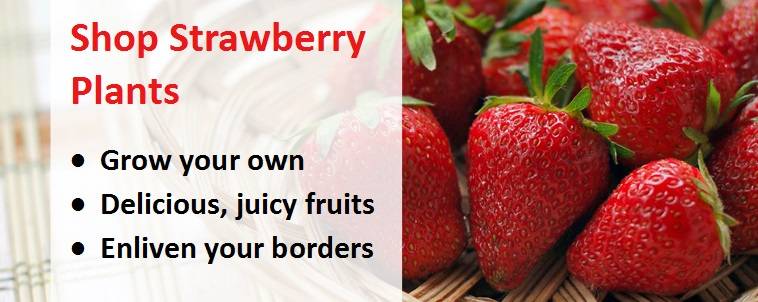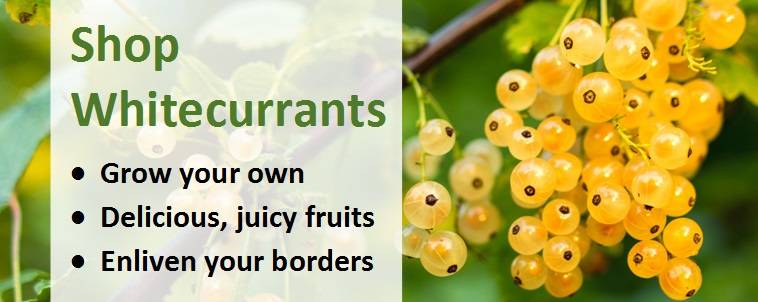Guide to Soft Fruit Bushes, Canes and Vines
Fruit bushes are a great way to add a productive quality to your ornamentals and enliven your garden borders with an abundant mix of flowers, fruits and, often, stunning autumn foliage colours. Consider building soft fruit bushes, canes and vines into your planting schemes to add a different twist to borders, attract wildlife to the garden and of course provide a supply of rich, succulent, juicy fruits that taste better than anything you will find on the supermarket shelves. There is nothing more satisfying than growing your own fruit and then eating it straight from the garden and by choosing the right varieties you can produce a bountiful crop even in the smallest of town gardens. We recommend planting a number of different types and varieties of fruit so you have something to pick throughout the harvesting season. Pruning your fruit bushes at the right time and caring for them appropriately throughout the year is important in obtaining a successful 'grow your own' crop. Follow the general garden care advice below to get the most out of your plants.
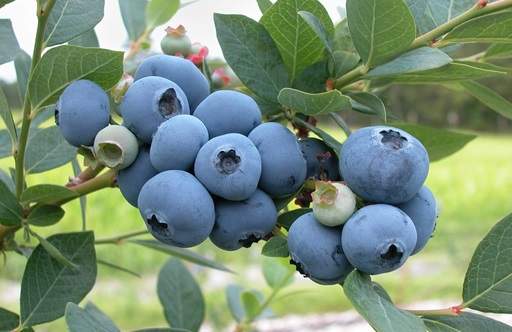
Use fruit bushes to enliven your garden borders
General Garden Care Advice
Most soft fruits are very easy to grow in the UK with very few special requirements, except for blueberries and strawberries which are a bit different (see below). Soft fruits are best planted in a sunny, sheltered site protected from cold, drying winds between October and early spring. Containerised plants can be planted at any time of the year providing the ground is not frozen or waterlogged, whilst bare root plants must be planted during the dormant season between November and March. Incorporate lots of organic matter and mulch with shredded leaves or compost; re-applying the mulch each year to keep the ground around the roots moist and suppress weed growth. Almost all types of fruits may need to be protected from preying birds.
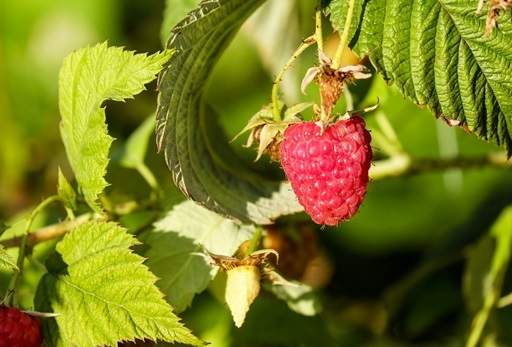
Fruit is best grown in a sunny south or west-facing position
Different types have different pruning requirements depending on whether they fruit on this year's growth or last year's growth, although the vast majority need some form of pruning to keep them productive year after year. Pruning is an art, not a science, but the general aim is to allow light and air into the middle of the bush to encourage a more abundant better quality crop, discourage disease and make it easier to access the fruit. With most fruit bushes you're aiming for a framework of main branches adorned with short spurs along the length of each. A universal rule is to prune out dead, diseased and crossing branches in the winter and remove some of the oldest stems each year, as well as any that are close to the ground which may sink when laden with fruit, to allow space for more productive new ones. For more detailed pruning guidance for the particular varieties you're looking to grow, see the relevant section below.
Blackberries
Plant & Fruit: Also known as brambles, blackberries are a common feature of British hedgerows and woodlands, with purple-black berries comprising many individual seed-containing fruits surrounding a cone-shaped core. Their thorny habit makes them perfect for growing along a fence or wall or as a hedge to keep cats, dogs and unwanted intruders out of your garden.
Harvesting: Blackberries are extremely productive and typically ready for picking between the end of summer and the beginning of autumn, just a little later than raspberries. Only pick blackberries that are large, plump and deep-purple black which pull away from the bush very easily - these will be sweet and juicy. Any which are smaller, not deeply coloured or do not pull away from the bush easily will have a sharp, tart taste.
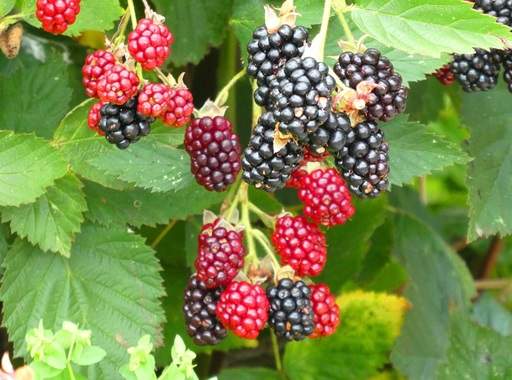
Culinary Uses: Suitable for eating straight from the bush, serving with sugar and cream, cooking in crumbles and cakes, making into jams, fermenting into wine or even muddling into a cold martini on a warm evening. Blackberries have a high vitamin C content and combine particularly well with apples in a fruit crumble. Wash thoroughly before use and adjust the amount of sugar you use in recipes accordingly to the sweetness of the blackberries you have harvested. Keep blackberries refrigerated and eat within a day or two. Alternatively, they can be placed on a layer of kitchen paper on a plate (to prevent them crushing each other) and frozen.
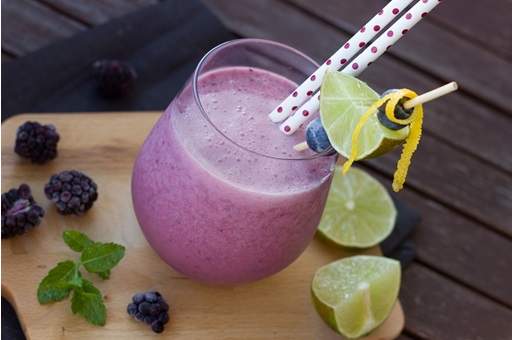
Garden Care: Ideally, train your blackberry plants up a wire trellis or give them some sort of supporting structure to ramble and scramble over, rather than leaving them entirely to their own devices; running wire between 2 sturdy posts is often a good practical solution. New canes grow one season and fruit the next after which they are exhausted and can be removed. When pruning, remove the old, fruited canes at ground level and tie in the new canes (which will fruit the following year) onto your support structure. Blackberries are very vigorous, so we recommend confining their roots with metal or stone barriers sunk 30cm (1 foot) or more below the ground.
Recommended Variety:
We recommend the thornless variety Blackberry Oregon Thornless. Oregon Thornless is less aggressive and rampant than other varieties, so you can focus on it producing the best fruit, rather than taking over your garden. It bears lovely white, cut-shaped flowers with large yellow-green centres in spring before producing a reliable abundant crop from late August to September. Suitable for smaller gardens.
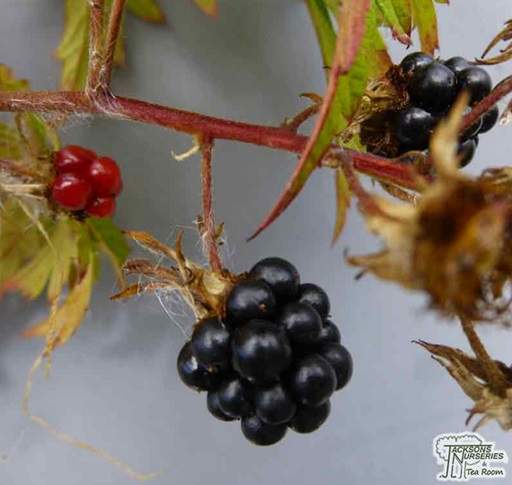
For more detailed information about blackberries, visit our grow your own blackberries page.
Blackcurrants
Plant & Fruit: Blackcurrant plants offer lots of ornamental interest with long racemes of pink-red flowers in June, backed by aromatic, fresh green foliage, followed by glossy, dark purple-black fruits borne in bunches in midsummer. They are highly versatile, making a great ornamental hedge, mixed border shrub or patio container specimen and will produce fruits for up to 20 years.
Harvesting: Generally ready for picking between July and August, preferably about a week after the fruits have turned blue-black so are ripe but still firm. We recommend removing whole bunches together with scissors.
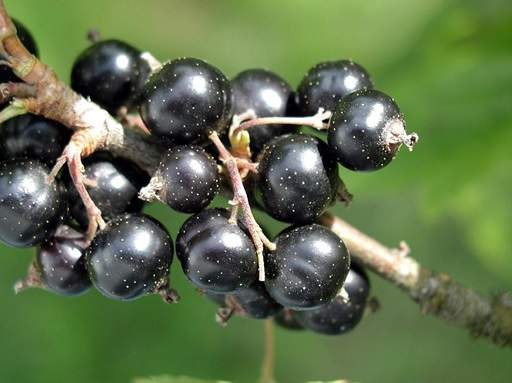
Culinary Uses: Perfect for using in jams, pies and puddings, or even eaten fresh either by themselves or with a dollop of cream or ice cream. Packed with vitamins, blackcurrants also combine well with other fruit to make a delicious and healthy mixed fruit salad.
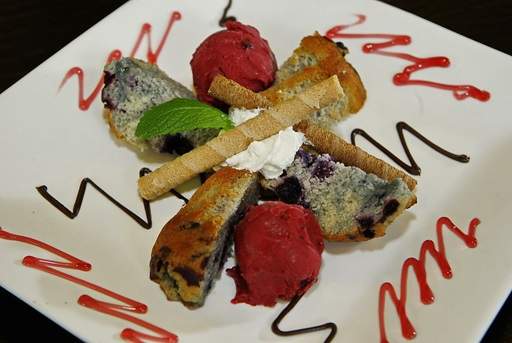
Garden Care: When planting blackcurrants out in the garden, position them deeply in the soil to encourage the production of vigorous new stems from below ground. A slightly acidic soil is preferable but not essential and they are tolerant of heavy soils. Constantly remove about one third of older branches each year to ensure a heavy crop of fruit, as branches become less productive with age (older branches can be distinguished by their darker brown or black bark). By summer the bush will have formed plenty of new shoots that will carry the fruit. If birds prove to be a particular problem, consider growing within a fruit cage or covering with an anti-bird mesh. Cuttings may be taken from established plants in October.
Recommended Varieties:
Blackcurrant Ben Lomond produces an abundant crop of sweet fruits in large clusters on last years growth in August, which freeze well. Alternatively, Blackcurrant Ben Connan produces masses of delicious fruits which are borne in clusters between July and August and is easy to grow and harvest, making it perfect for novices.
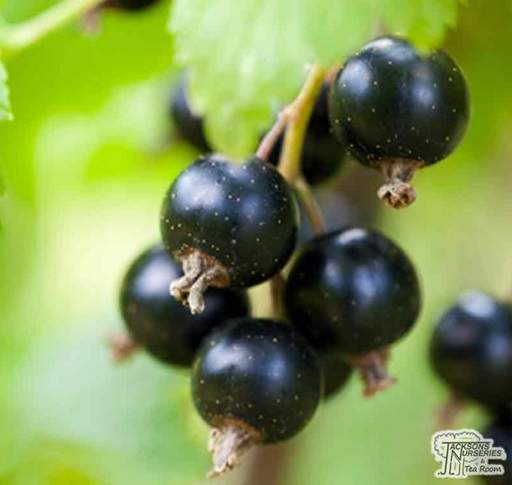
For more detailed information about blackcurrants, visit our grow your own blackcurrants page.
Blueberries
Plant & Fruit: Easy to grow and pest and disease free, blueberry bushes are highly versatile, making a great foundation planting along the front of your home, informal hedge, patio container planting or simply for incorporating into the perennial border. They offer dainty white flowers in spring, tasty summer fruits, brilliant autumn foliage colour and bright stems in the winter.
Harvesting: Blueberries are ready for harvesting when they are deep blue with a white sheen and pull away from the plant easily. Different fruits on the same plant will ripen at different times; picking regularly is the best way to catch each fruit when it's just right.
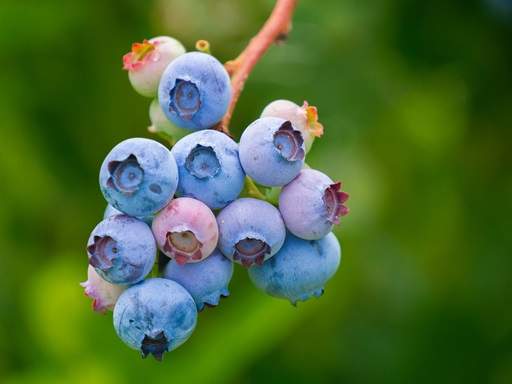
Culinary Uses: Blueberries fit firmly into the 'superfruits' category because they contain lots of antioxidants as well as a high anthocyanin content, valued as cancer-busting. They are delicious eaten fresh but can also be incorporated into muffins, pies or pancakes.
Garden Care: Blueberries are acid loving plants so are best grown in a naturally acidic soil or planted with plenty of ericaceous compost and mulched regularly with acidic materials such as pine needles, composted conifer clippings or other acidic organic matter. For the first few years just remove dead, diseased and damaged branches to allow the plant to develop a strong structure. Whilst it's painful, it's also best to remove all the fruit buds in the first couple of years and only allow a light harvest in the third, so the plant puts all its initial energy into developing a strong framework for future production. Once established, remove some of the older branches each year to promote more abundant fruit production; these can normally be easily distinguished because they are grey with spindlier side-shoots and fewer fruit buds. Keep well watered as they do not like being allowed to dry out.
Recommended Varieties:
Blueberry Earliblue is ready for harvesting in early July, a few weeks before other varieties, so is great growing alongside other blueberries to extend the cropping season. Blueberry Bluecrop is the staple blueberry with an excellent taste and the added benefit of beautiful autumn-red foliage colour, whilst Blueberry Goldtraube has particularly aromatic fruits which crop from July to August and freeze well.
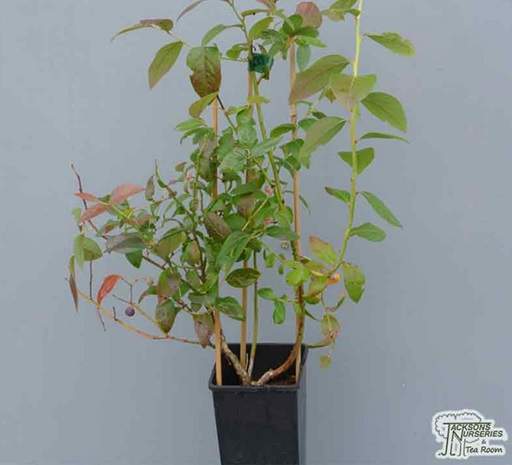
For more detailed information about blueberries, visit our grow your own blueberries page.
Cranberries
Plant & Fruit: Cranberry plants are easy to grow evergreens which are hardy and virtually pest and disease free. There are 2 main forms - upright bushes with woody stems and maple-like leaves and groundcover varieties with much smaller leaves which spread via underground rhizomes. The many uses of cranberry bushes makes them highly versatile and they of course also produce clusters of plump berries which turn a deep scarlet as the leaves are dropping.
Harvesting: Fruit is ready to harvest when it becomes distinctively deep red, typically from September to early November. Before harvesting extensively, break one cranberry to check that the inner seeds are brown. Naturally, cranberries deeper into the plant won't be as vibrantly coloured as those directly in the sunlight, but they'll still be equally as tasty.
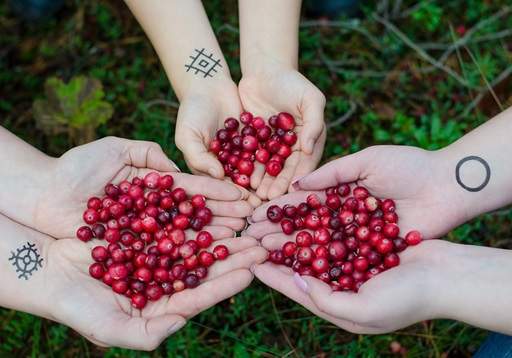
Culinary Uses: Cranberries are 'super fruits' - they are an excellent source of vitamin C, have a high nutritional content and boast antioxidant qualities. They have a sharp and sour flavour when eaten fresh, so are more commonly used in baking or to create preserves, juices and sauces. Even if you don't choose to harvest your cranberries, the bushes will offer fabulous ornamental value and attract wildlife to your garden.
Garden Care: As acid-loving plants, Cranberries are best grown in a naturally acidic soil or with plenty of ericaceous compost. If your soil is not naturally acidic you will need to mulch regularly with acidic materials such as composted conifer clippings, pine needles or other acidic organic matter, or modify your soil by mixing in a carefully measured amount of sulphur each year. If there is risk of an early frost, cover your cranberry bed with plastic or a blanket during the night; it's better to do this and pick the berries when they're fully ripe, rather than trying to pick them prematurely before the early frost.
Recommended Variety:
Cranberry Pilgrim produces tart red berries which are great for using to cook, making juices and of course the Christmas dinner cranberry sauce, or will provide a great source of food for wildlife if left unpicked. The red berries follow pink spring flowers and are produced above a low-growing evergreen mass of leathery leaves with a cascading habit, perfect for hanging baskets or containers.
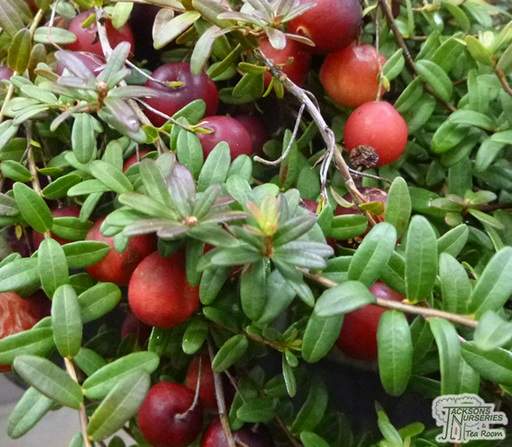
For more detailed information about cranberries, visit our grow your own cranberries page.
Gooseberries
Plant & Fruit: Gooseberries grow on dense bushes that reach 60cm-1.2m (2-4 foot) tall without training, equipped with straight 1-inch spines along the stems. Fruits are green when young, gradually maturing to a translucent yellow-green or dusky purple to red depending on the variety. The berries are produced alongside luscious green foliage which appears early in spring and turns an attractive bronze-red in autumn. Gooseberries work well in a mixed border and make a great foundation planting along the front of your home or as an informal hedge in the backyard.
Harvesting: Gooseberries helpfully fill the fruiting gap between the last strawberries and the first raspberries, ripening by mid-July. When ripe, fruit is juicy and sweet with a pleasing acidity and it holds its quality well on the bush until picked. If you're short on space, train your gooseberry against a wall or fence in a fan-shape or as a horizontal espalier to maximise fruit production.
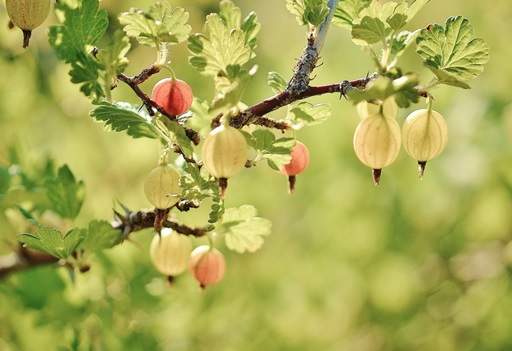
Culinary Uses: The size of large grapes but more spherical in shape, sweeter Gooseberries can be eaten fresh, whilst some varieties that are a little more tart are best cooked, particularly for making the classic English pudding gooseberry fool. They will store in the fridge for up to a week, but be sure to snip off the stem and flower end from the ends of your gooseberries before using them in a recipe.
Garden Care: Gooseberries are generally unfussy but do require regular pruning to prevent them from becoming sprawling. Aim to keep the centre of the bush open to sunlight with good air circulation, leaving a solid framework of 3-5 regularly spaced main branches. If your bush has not been kept in check for a while it will tolerate hard pruning to control size if required, particularly when mature. When cutting stems back, it's best to find an upward (or inward) facing bud because the branches will tend to grow downwards. If your plant has one, keep the main 'leg' stem (immediately above the ground before the bush branches) clean by removing any growth emerging from it (called "suckers") up to the point that your bush branches out properly. Suckers can be planted again separately to create new plants if you wish.
Recommended Varieties:
Gooseberry Careless produces abundant crops of large berries with a crisp flavour which are produced alongside deeply-lobed leaves after the production of pink-flushed green flowers. Alternatively, Gooseberry Invicta is an earlier fruiting variety which is well suited to training as a fan, espalier or cordon.
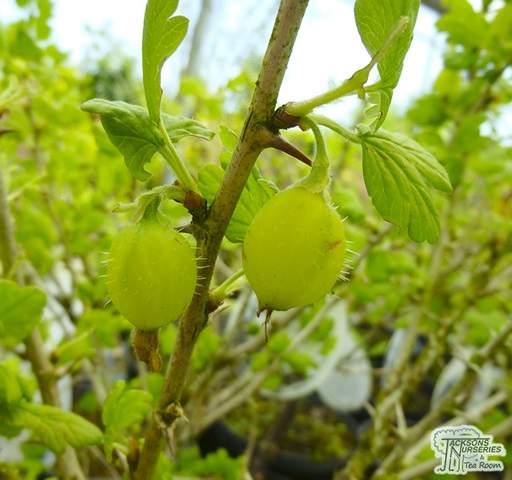
For more detailed information about gooseberries, visit our grow your own gooseberries page.
Grape Vines
Plant & Fruit:
Grape vines can be grown outdoors in southern Britain and are actually easier to grow than you might think. They have a lot of ornamental value to offer not only for the fruit but also the excellent autumnal foliage colours in hues of purple, orange and yellow, making them an excellent alternative to conventional climbers. Vines thrive in well-drained conditions with lots of direct sunlight, making them particularly suitable plants for growing on gentle slopes, mounds or hilly areas, providing they are not exposed.
Harvesting:
Grapes are ready to harvest when they are rich in colour. A ripe grape will crush easily but should not be shrivelled; it should be plump and juicy and be reasonably sweet, rather than tart and acidic. The more mature a grape becomes, the sweeter its taste will be. When you're ready to harvest, remove whole clusters of grapes using scissors, being careful not to damage or bruise them. Grapes will keep in the fruit bowl for around 5 days or can be refrigerated for up to 2 weeks. Do not wash grapes before storing them as too much moisture will damage the fruit.
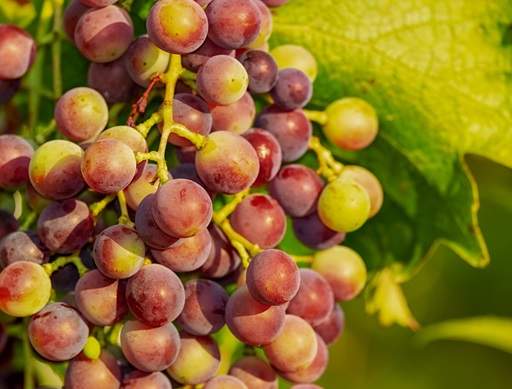
Culinary Uses:
There are two main types of grapes - those best eaten fresh or in a dessert and those best used to make wine, although some are versatile and can be used for both. The varieties we recommend below are suitable for both uses.
Garden Care:
Grape vines must be grown in a sheltered spot for a successful crop, avoiding frost pockets and providing timely cold protection whenever a hard frost hits. Some varieties are best located in the greenhouse in the UK to deliver good results. If you plant a grapevine for fruit you will need to keep its climbing prowess under control. Using the guyot system works well - this involves installing support wires horizontal to the ground with the first 40cm (16 inches) above the ground, followed by 3 more at 30cm (12 inch) intervals.
Plant your grape vine next to the guyot support system and insert a cane behind the vine as a means of allowing the vine to access the support wires. Tie the stump of the vine to the cane and secure the cane to the wire supports and your vine will have all the support it needs to thrive. For more information on training grape vines visit our grow your own grape vines page. Train your grapevine based on one or a number of permanent stems from which annual fruiting side shoots will appear. Side shoots should be cut back to one or two buds in mid-winter, at the same time as reducing established main stems to a single, new bud and developing main stems to half their new growth. Grapes are hungry plants so feed every 6 weeks during the growing season with a balanced feed such as blood, fish and bone, or every 3 weeks with a liquid feed.
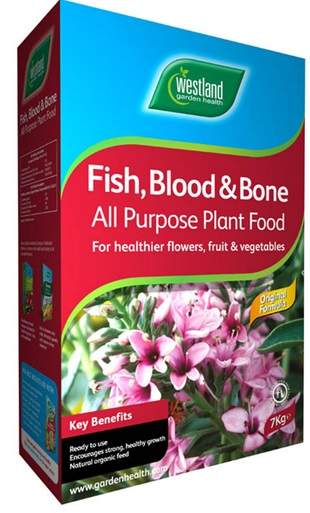
Recommended Varieties:
Grape Vroege van der Laan is a hardy white grape cultivar that will fruit reliably in most areas of the UK and has a very sweet taste. Grape Black Hamburg is recommended for greenhouse or conservatory cultivation only, as it will only fruit outdoors after long, hot summers. If you have the conservatory space available, we recommend Black Hamburg as it is the finest tasting variety available.
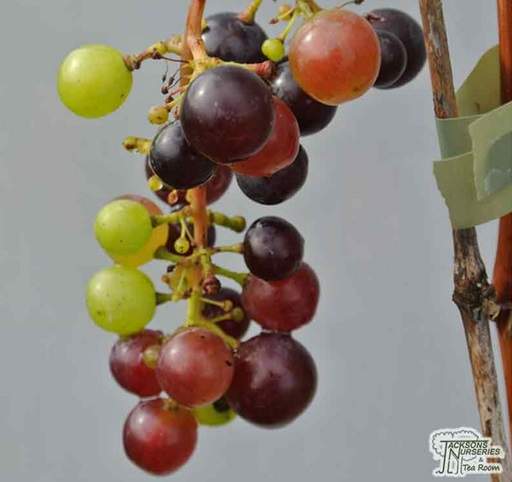
For more detailed information about grape vines, visit our grow your own grape vines page.
Kiwis
Plant & Fruit: Native to northern China and north-eastern Asia, kiwi vines are quite vigorous with deciduous, heart-shaped foliage and dainty white flowers during the summer. They make attractive climbing plants and start to produce fruit 3 years after planting, cropping abundantly once established. Kiwis are easy to grow and many are self-fertile, so no pollination partner is required.
Harvesting: Once your kiwi starts to crop, pick the fruit before the first frosts and place it with other ripe fruit in the bowl to encourage ripening. Harvesting is done by snapping fruits off their stalks when the skins turn brown and when samples of cut fruit show black seeds. The fruit will be hard immediately after harvesting, but will soften and sweeten in a week at room temperature. If you prefer to store your fruit for later consumption, it can be kept in a pierced plastic bag in the refrigerator for up to 3 months.
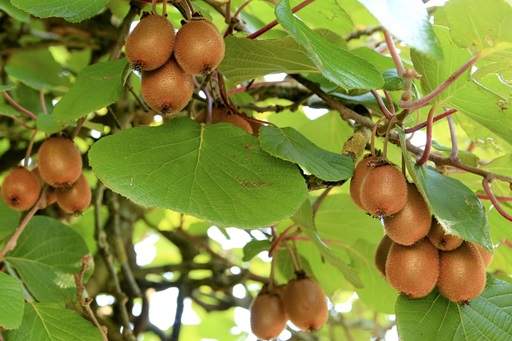
Culinary Uses: Kiwi fruit are often cut in half lengthways and eaten fresh, but they also have many other culinary uses. Try them in a variety of pies, cakes and creamy desserts, as a side to lamb or fish dishes and for adding an exotic twist to fruit salads. The centres have a sweet but unique flavour which is high in vitamins C and E, potassium, copper and magnesium. The brown outer layer is best not consumed - it is tasteless with no nutritional value and may cause throat irritations.
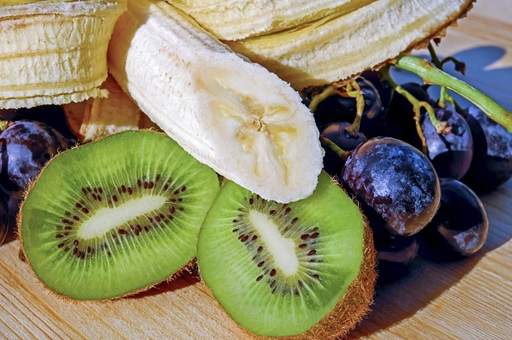
Garden Care: Kiwi vines prefer acidic soils, so mix in plenty of ericaceous compost when planting and mulch regularly with pine needles, composted conifer clippings or other acidic organic matter. The vines must be trained to a robust support which provides adequate room for climbing and rambling; training into an espalier shape against a wall or fence is ideal, whilst growing over a pergola or archway is equally viable. Cut back to 30cm (1 foot) after planting and tie leading shoots to a cane attached vertically to some support wires above. The guyot system described for grapes above works well for kiwi vines too. Two things are very important - (1) protect your vines from frost damage in the winter and spring; and (2) do not allow the roots to dry out.
Recommended Varieties: Kiwi Jenny is a self-fertile variety with delicious fruits about the size of a hen egg that are ready to harvest in late summer. It also offers red-tipped, heart-shaped leaves and small white flowers that are borne in the summer. Jenny is a vigorous variety great for growing over an arbour, archway or support.
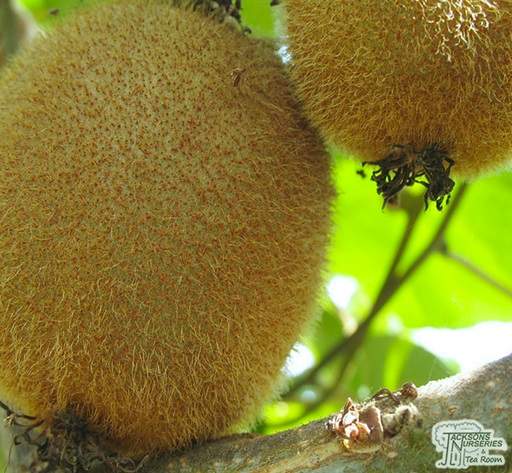
For more detailed information about kiwi vines, visit our grow your own kiwi vines page.
Loganberries
Plant & Fruit: Loganberries resulted from an accidental cross between blackberries and raspberries by a horticulturalist called James Logan. The fruits resemble the blackberry more than the raspberry, but are more elongated and dark red rather than black with a sharp, tart flavour. Loganberries are undemanding, easy to grow and generally pest and disease free with a sturdy, thorny habit (unless you choose a thornless variety). Vigorous and highly productive, they have rambling stems rather than upright canes and tend to vine like a blackberry. Well suited to training against a wall, alongside a wall or fence, or growing in the kitchen garden.
Harvesting: Loganberries fruit on the hardened, woody growth from the previous year throughout August and September. Berries are ready to harvest when they have darkened from red to a deep purple, by which time they will be at their most flavoursome. Bear in mind that berries on the same plant will mature at different rates, with some ready to pick as others are just starting to form, so revisit your bush several times during the harvesting season and only harvest berries when they are ripe. Unlike raspberries, loganberries do not pull free from their core when picked, so you can not use this as a way to gauge the ripeness of the fruit. When harvesting, look out for fruits hidden below the foliage, wearing gloves and long sleeves to protect you from the prickly vines. We recommend a thornless variety to make harvesting easier. Loganberries fruit for around 15 years.
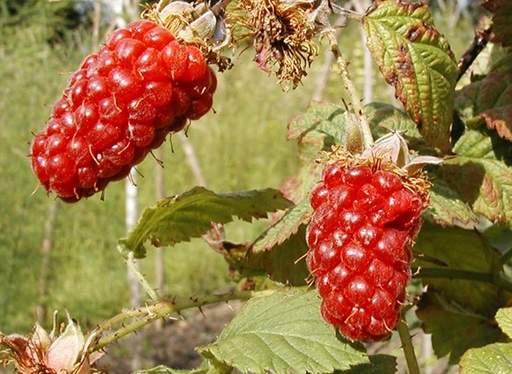
Culinary Uses: Loganberries are juicy fruits with a sharper, more tart taste than raspberries. They are not farmed on a mass scale (the differing maturity rates of different fruits on the same plants prevents it from being commercially feasible), so are seldom available in the supermarkets, making your personal, home-grown supply all the more special! Loganberries are smaller but better flavoured than tayberries (another blackberry-raspberry cross) and have a range of culinary uses. Delightful eaten fresh with sugar and/or cream, they are also great in a variety of pies, crumbles and jams, where they can be used interchangeably with blackberries. Use plenty of sugar to counter-balance the naturally tart loganberry taste. In savoury cooking, loganberries go well with game dishes, offering high levels of fibre, magnesium and vitamin C. Alternatively, they can be used in a range of drinks, such as fruit syrups or punches, milkshakes and even country wines. Berries will stay fresh for 5 days if refrigerated, or they can be frozen for up to a year for use in recipes.
Garden Care: Loganberry vines have a naturally sprawling habit, so are best grown with some support to prevent them from getting out of control - a trellis or horizontal wires across a wall are ideal. Growth can become a little untidy if not kept in check, especially given the vigorous habit, so regular pruning is a must. Fruits are only produced on last season's growth, so after these woody stems have been exhausted of their fruit they should be cut back to just above ground level. At the same time, tie in new canes (which will fruit the following year) onto your support structure.
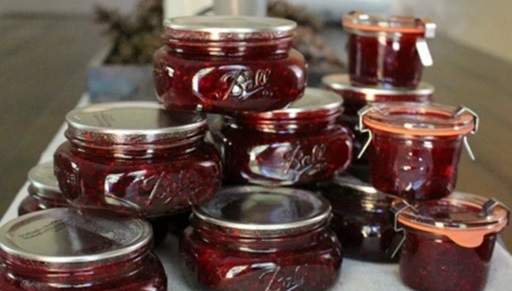
Recommended Varieties:
We recommend a thornless loganberry called Rubus Loganobaccus which has soft culinary berries and nicely fills the harvesting gap between raspberries and blackberries. Grows best with plenty of sunlight and shelter from strong winds.
Raspberries
Plant & Fruit: Raspberries are robust, easy to grow vines that are suitable for hedge-type plantings or growing along a wall or fence to keep cats, dogs and other unwanted visitors out of your garden. They're also suitable for growing in containers using multi-purpose compost and bamboo canes for support. There are 2 main types - summer fruiting and autumn fruiting raspberries. Summer varieties produce fruit on stems that grew the previous year, whilst autumn varieties produce fruit on new vines that have developed in the current year.
Harvesting: Summer raspberries produce fruits between June and early August, whilst autumn raspberries bear fruits from August to October. For both types, fruits are ready to be harvested when they come off the stems easily when pulled gently. Raspberries don't keep for very long, so either eat them fresh or refrigerate them on a baking tray for future use.
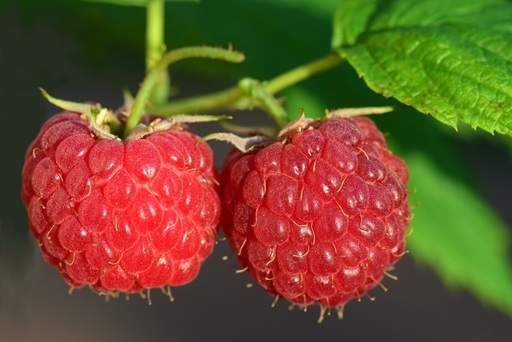
Culinary Uses: Raspberries are gorgeous eaten fresh with cream or ice cream and topped with sugar, or mixed into bran cereals or yoghurts. They can also be substituted for strawberries in most recipes, such as cakes, tarts and puddings. Raspberries are truly versatile fruits, being at home in waffles, pancakes, other desserts and smoothies but also salads. Finally, they can be made into jams and jellies or used to flavour liqueurs, spirits, wine and champagne.
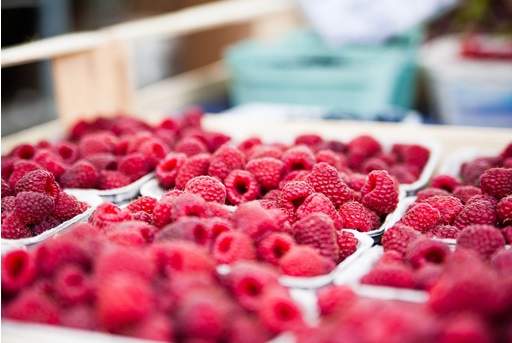
Garden Care: Raspberries grow best against a south or west-facing wall with plenty of light and an acidic, well-drained soil. They require climbing support, so the guyot system described for grapes above works well for raspberry vines too. After planting, cut your raspberries back to a bud about 25cm (9 inches) above the ground and apply a monthly liquid feed just before and during the fruiting season for best results. A different pruning approach is required for summer and autumn fruiting varieties. For summer fruiting raspberries, cut down fruited canes as close to the ground as possible, immediately after they've fruited. All canes of autumn fruiting raspberries should be cut right back to ground level in February to encourage the production of fresh new stems and an abundant crop in the coming season. Don't allow the tops of either variety to flap around in the open air, instead bend them back and secure them to the top of your supporting structure to prevent wind damage. Remove suckers as soon as they appear and consider using them as cuttings to create new plants.
Recommended Varieties:
Summer Fruiting Varieties - Raspberry Glen Lyon is a self-fertile raspberry producing an abundance of rounded, large glossy fruits in early June, great for culinary uses and desserts. Alternatively, Raspberry Glen Moy has an exquisite taste with the added benefit of aphid resistance. If you're restricted to one variety, opt for Raspberry Malling Promise, which will reliably deliver strong yields year after year.
Autumn Fruiting Varieties - Raspberry Autumn Bliss fruits from mid-August, right through to the first frost. It is shorter and bushier than the summer fruiting varieties, so is normally self-supporting, perhaps just requiring occasional staking. Raspberry Malling Jewel is an all-purpose steady cropper with good disease resistance.
For more detailed information about raspberries, visit our grow your own raspberries page.
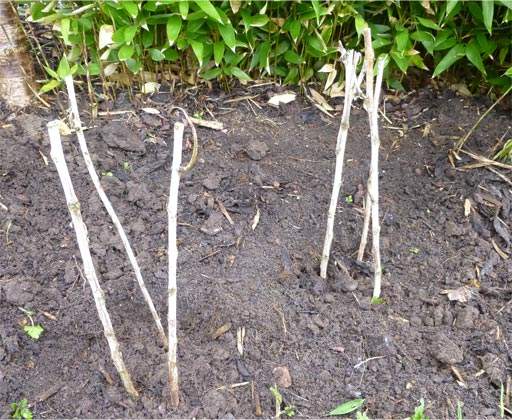
Raspberry canes
Redcurrants
Plant & Fruit: Redcurrants are pretty little bushes which can be grown with or without a supporting structure. They can be trained in three main forms - bushes, cordons and fans - working well in a mixed border, as a foundation planting along the front of your home, or an informal hedge in the backyard. Pest and disease resistant, they produce tasty fruit with a translucent skin which appears to glow from within when caught by direct sunlight. They can be grown as a bush in a patio container using John Innes No 3 or multi-purpose compost, providing you use pot feet to prevent the base from getting waterlogged in the winter.
Harvesting: Harvest in mid to late summer, waiting until the currants have become large, firm and juicy. If you can protect them from birds, mature plants will be literally dripping with long clusters of gleaming scarlet beads hanging from old wood by July. Cut whole bunches of berries at the top of the fruiting racemes using scissors, being careful not the damage or bruise the fruit. Currents retain their quality on the bush much better than other fruits without dropping, so don't feel you have to pick more than you need all in one go.
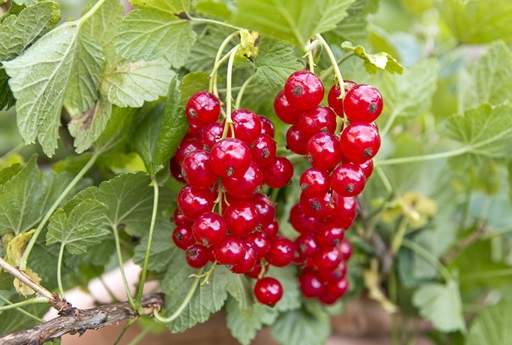
Culinary Uses: Redcurrants are most flavoursome when grown in full sun, in which case they will be sweet enough to eat straight off the bush when fully ripe. Bushes grown in light or dappled shade or those not fully ripe will have a sharp, tart flavour so are either best left on the plant to fully mature or used for culinary uses such as making pies, jams, jellies and cooked desserts. Ideal for satisfying the taste buds, they can be refrigerated for up to 3 days or frozen for future use.
Garden Care: Redcurrants and white currants are both cared for in the same way. Mulch with plenty of well-rotted organic matter when planting and space 50cm apart for cordons, 1.5m apart for bushes and 2m apart for fans. Once planted, prune off any suckers growing from the base of the plant or below ground to either the ground or main stem. Cut back other branches to an outfacing bud at about one third of their original length. Currants do not require a support structure, although they can be trained along wires if you prefer. Ongoing pruning should involve removing any less productive stems of more than 3 years old and cutting back leading shoots to an upright bud at half their length if needed to keep the plant within its designated space. If growing as a cordon, ensure the head of the plant is not allowed to get too large, thinning out branches if required, otherwise it will shade the fruit underneath. Grow within the protection of a fruit cage if birds are a particular problem, mulch annually and feed regularly with a high potash fertiliser.
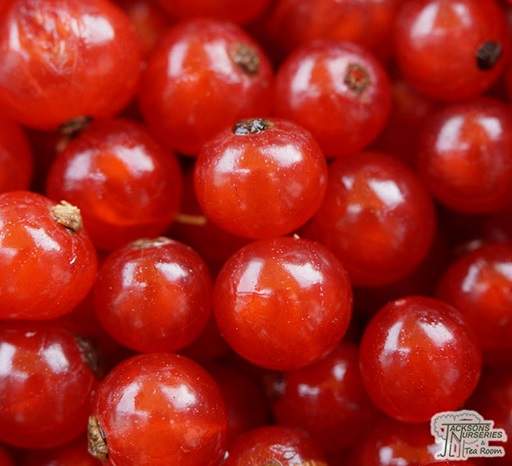
Recommended Varieties:
Redcurrant Red Lake produces masses of flavoursome berries on long trusses between July and August. It has a spreading growth habit with mid-green foliage and fruits well in sun or partial shade.
For more detailed information about redcurrants, visit our grow your own redcurrants page.
Rhubarb
Plant & Fruit: Rhubarb is an easy to grow, herbaceous perennial, which produces rich pink or red leaf stalks with large distinctive triangular leaves each spring, then dies back to the ground again each winter. Ideal for first time gardeners, it is extremely hardy and actually requires a winter chilling period to deliver the best harvest. Northern England has the ideal climate as the cooler summers and harder winters make for richer, redder stems.
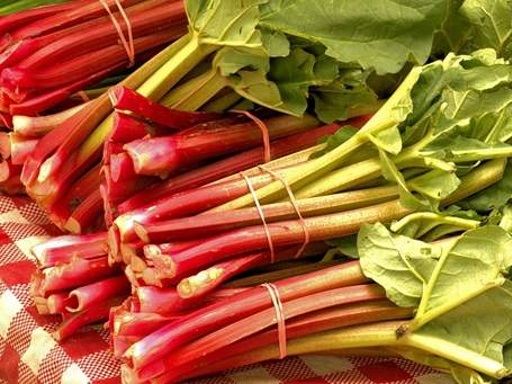
Harvesting: Resist the temptation to harvest your rhubarb plant in the first year after planting to allow it to become well established, and harvest only lightly in the second season. Thereafter, your rhubarb plant will be ready to harvest from April to June, with harvests lasting for 8-10 weeks for mature plants. Wait until the stems are around 30cm (1 foot) long and the leaves have fully unfurled and follow the general rule of not harvesting more than half of all stems each year, selecting the largest stalks first. Rhubarb stalks are removed by pulling them upwards and away from the stem (they should snap off easily without too much force); avoid cutting stems with scissors or secateurs as this leaves the remaining stump liable to rot. If the stalks become thin, stop harvesting - this means the plant's food reserves are low and further harvesting will weaken your plants.
Culinary Uses: Firstly, only consume rhubarb stems and never the leaves, which contain oxalic acid and are poisonous. Rhubarb is ready to consume as soon as harvested, and freshly cut pink-red stalks are firm, glossy, juicy and tasty. Fresh leaf stalks are crisp (similar to celery) often with a strong, tart taste, making them best suited to cooking in pies and desserts with measured amounts of sugar. Rhubarb features in many a classic British recipe, including rhubarb crumble, rhubarb fool and rhubarb pie. It is also great for using in savoury dishes, pickled, dehydrated and infused with fruit juice or used to make rhubarb jam. Some varieties are sometimes also eaten raw, perhaps dipped in a little sugar.
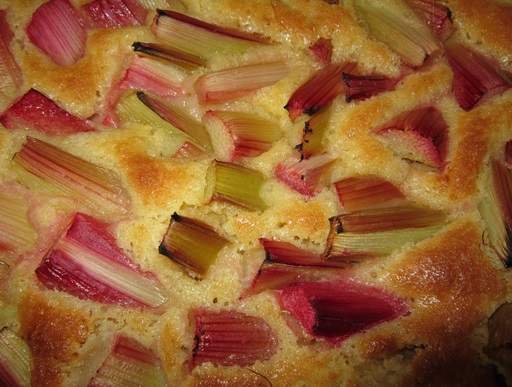
Garden Care: Whilst rhubarb can be grown from seed, it's not particularly easy to do so; far easier is buying rhubarb crowns which are established plants that already have at least one years growth and will produce a crop in their first season after planting. Plant crowns about 1 metre apart to prevent over-crowding and allow each plant to establish an extensive root system, leaving them undisturbed as far as possible once planted, except to harvest. Rhubarb is also suitable for container growing using John Innes No 3 compost combined with well rotted mature or organic matter. Apply a general fertiliser such as Grow Sure in spring, followed by some fish blood and bone in June and dead head flowers immediately after they appear in early spring. Flowers which are allowed to seed will weaken the plant and drain energy that could otherwise be used for rhubarb production. Lift and divide into 3-4 separate crowns using a spade every five to six years in October to maintain vigour, replanting immediately either 1 metre apart or in containers (consider giving divided clumps to a neighbour if you don't have enough space in your own garden). Allow the foliage to die back naturally in autumn then remove the dead leaves and any other debris to expose the growing points to winter cold.
Rhubarb growth can be 'forced', which means to encourage growth earlier than would otherwise be possible. For details on how to force rhubarb plants visit our grow your own rhubarb page.
Recommended Varieties:
We recommend two varieties. Firstly, Rhubarb Timperley Early for its slender, long pink-red stems measuring up to 60cm with a tart flavour, ideal for crumbles. Secondly, Rhubarb Victoria, which is a traditional, heavy-cropping variety with tender flesh and an excellent balance of sweetness and acidity.
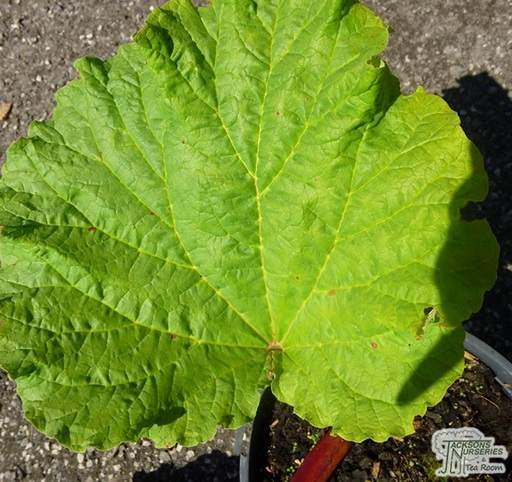
Rhubarb Victoria
For more detailed information about rhubarb, visit our grow your own rhubarb page.
Strawberries
Plant & Fruit: Strawberries are delicious, succulent and flavoursome aromatic fruits which epitomise the traditional British summertime. When you think about growing berries, strawberries are likely the first fruit that comes to mind and there is certainly a certain thrill of growing your own sun-ripened, freshly picked fruits. Strawberries have a low, cascading habit so are well suited for under-planting other fruits on the vegetable patch. They are perhaps even better suited to growing in pots on the patio, hanging baskets, window boxes or raised growing bags, as this will help conserve space in smaller gardens and make your plants less vulnerable to slugs, snails and small animals who love strawberries as much as we do! Summer fruiting varieties are the most popular; they have a short but heavy cropping period of around 2-3 weeks.
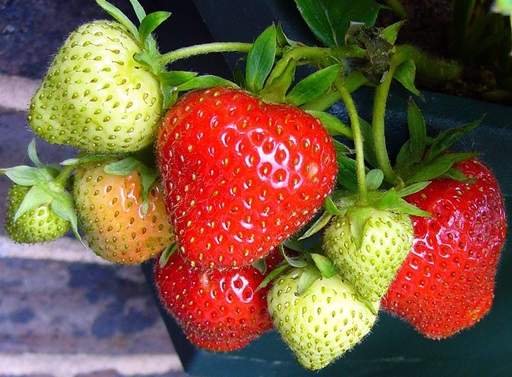
Harvesting: If growing your strawberries in the ground, lay a thin layer of straw or fabric underneath the fruits when they start to develop to prevent them being affected by soil splashes, which ultimately lead to blemishes in the fruit. This is also the time to apply slug pellets or other slug repellent measures to protect the crop from damage. Strawberries are ready for harvesting when they are plump, bright red and juicy. Pick gently in dry weather to avoid bruising and ensure the green stalk remains with the fruit. Check whether any more strawberries are ripe and ready for picking every other day during the harvesting period. The first crop is always smaller but strawberries will then crop prolifically for about 3 years.
Culinary Uses: Strawberries are a versatile and well-loved fruit. The quintessential British summer dish is strawberries and cream, perhaps with a sprinkling of sugar, but these high fibre, vitamin-rich fruits have so many other uses, whether fresh, cooked or frozen. They can be combined with sugar and reduced over heat to make syrup, or baked into cakes, desserts, pastries and muffins. Alternatively, strawberries make beautiful smoothies, mixing well with ice, milk, yoghurt or other fruit juices and can even be combined with nuts or cream cheese to make a fruity dip.
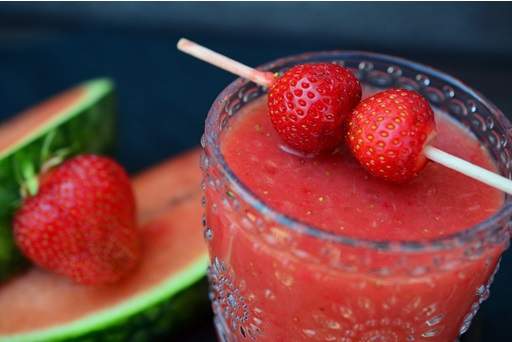
Garden Care: Strawberries are best planted in early autumn or early spring in a well-drained spot with plenty of sunlight. If all parts of your garden have poor drainage, grow strawberries on raised fringes 10-15cm (4-6 inches) high. Water your strawberries regularly throughout the spring and summer and apply a balanced liquid feed every 2 weeks, switching to a high potassium fertiliser to encourage strong fruiting when the flowers start to appear (tomato feed it ideal). Remove flowers in the first year to allow your plants to become more strongly established and promote a bumper crop the following year. When your bushes fruit, use a draped net or net tunnel to protect the strawberries from birds and squirrels as they start to swell. If you really can't wait for your glut of summer fruits, it's possible to bring the fruiting season forward by placing strawberries under cloches or polythene covers in late March - but make sure they spend the autumn and winter outside in the cold first (protected from harsh frosts when required) as they require a chill period to initiate flowering. Cut off some of the runners bearing new plantlets in August to encourage the plant to focus more energy into fruits the following year. Runners can be repotted and grown as independent plants if you wish. Once cropping has finished, remove any debris from around your strawberry plants and cut off old, weary leaves.
Recommended Varieties:
Strawberry Cambridge Favourite is the best known variety for good reason; it is a reliable, heavy cropper with good pest and disease resistance which produces large bright red fruits with a sweet and juicy flavour.
For more detailed information about strawberries, visit our grow your own strawberries page.
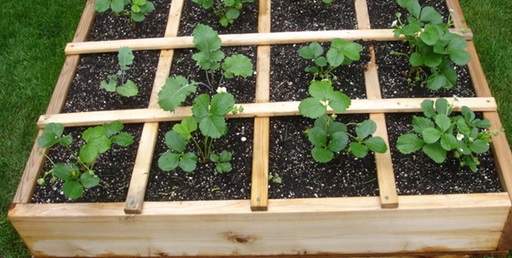
Whitecurrants
Plant & Fruit: Whitecurrants are deciduous flowering shrubs growing 1 metre tall with broad, palmate leaves and masses of large, plump, sweet, almost translucent berries on long racemes from late July through to August. It has a number of favourable qualities - long cropping season, self-fertile, low maintenance, hardy and unfussy, as well as offering sweeter fruits than its red counterpart. Whitecurrants work well in a mixed border and make a great foundation planting along the front of your home or as an informal hedge in the backyard. It is actually a different cultivar of the redcurrant, rather than being another fruit entirely, so can also be trained in three main forms - bushes, cordons and fans. Like redcurrants, whitecurrants can also be grown as a bush in a patio container using John Innes No 3 or multi-purpose compost, providing you use pot feet to prevent the base from getting waterlogged in the winter.
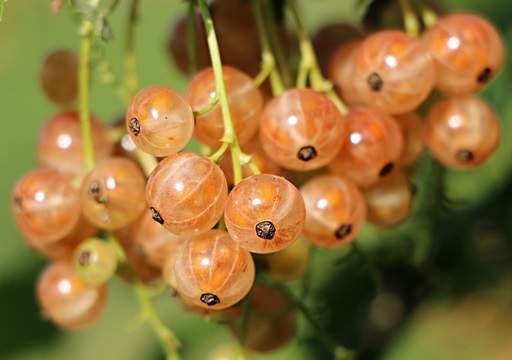
Harvesting: Once planted, currants remain productive for almost 20 years, producing large, juicy fruits. Harvest when the fruits become firm between mid and late summer. It's best to cut off whole racemes of berries together using scissors, being careful not to harm the fruit. Pick what you need at regular intervals, as the currents retain their quality on the bush much better than other fruits.
Culinary Uses: Whitecurrants have essentially the same culinary uses as redcurrants. They are very satisfying for the taste buds and can be used to make cooked desserts, pies, jellies and jams. They will refrigerate for a few days and freeze well for future use.
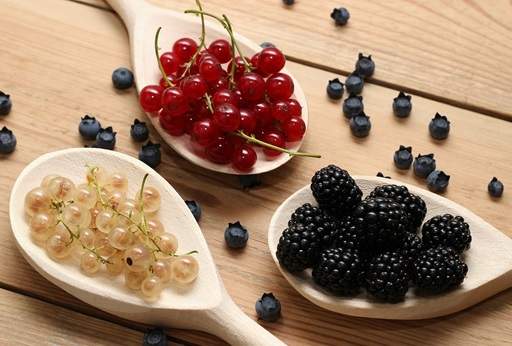
Garden Care: Redcurrants and white currants are both cared for in the same way. Mulch with plenty of well-rotted organic matter when planting and space 50cm apart for cordons, 1.5m apart for bushes and 2m apart for fans. Once planted, prune off any suckers growing from the base of the plant or below ground to either the ground or main stem. Cut back other branches to an outfacing bud at about one third of their original length. Currants do not require a support structure, although they can be trained along wires if you prefer. Ongoing pruning should involve removing any less productive stems of more than 3 years old and cutting back leading shoots to an upright bud at half their length if needed to keep the plant within its designated space. If growing as a cordon, ensure the head of the plant is not allowed to get too large, thinning out branches if required, otherwise it will shade the fruit underneath. Grow within the protection of a fruit cage if birds are a particular problem, mulch annually and feed regularly with a high potash fertiliser.
Recommended Varieties:
Whitecurrant Versailles Blanche is a self-fertile, heavy-cropping, deciduous white current with small, pale green spring flowers and a very reliable crop of berries year after year.
For more detailed information about whitecurrants, visit our grow your own whitecurrants page.
-
Plant Guides
- Guide to Bamboo Plants
- Guide to Climbing Plants
- Guide to Climbing Roses
- Guide to Conifers
- Guide to Floribunda Roses
- Guide to Fruit Bushes
- Guide to Fruit Trees
- Guide to Garden Ferns
- Guide to Garden Shrubs
- Guide to Heather Plants
- Guide to Hedging Plants
- Guide to Herb Plants
- Guide to Herbaceous Perennials
- Guide to Hybrid Tea Roses
- Guide to Japanese Maple Trees
- Guide to Ornamental Grasses
- Guide to Rhododendrons
- Guide to Topiary
Share this page:

